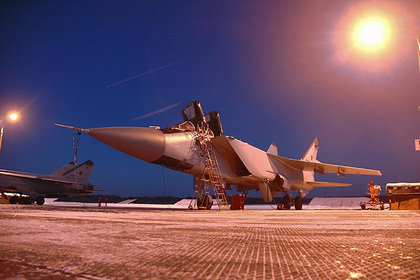The United States drew attention to the expanded arsenal of MiG-31BM and MiG-31BSM interceptors. The aircraft received a new short-range R-74M air-to-air missile. The new ammunition makes the MiG-31 one of the most versatile aircraft of the Russian Aerospace Forces (VKS). A similar opinion was expressed by the magazine The Military Watch.
The authors of the publication note that the MiG-31 received the Zaslon-M radar station and missiles with a range of 400 kilometers, which determine the advantages of the aircraft in hitting targets beyond visual visibility.
The design of the MiG-31, designed to intercept aerial targets, caused the shortcomings of the aircraft in close combat. The Military Watch writes that the aircraft is not adapted to close combat and is "almost unable to perform complex maneuvers." In addition, the MiG-31 radar is designed to hit targets at long distances.
The R-74M missile compensates for the shortcomings of the MiG-31 in close combat, allowing it to destroy maneuverable targets. The new ammunition ensures the destruction of targets at a range of 300 meters. The publication emphasizes that the R-74M will allow hitting helicopters, cruise missiles and drones without the use of long-range missiles R-37.
The authors summarize that the new missile makes the MiG-31, which uses a wide range of ammunition, "a very versatile aircraft." The upgraded interceptors can also carry Dagger air-to-surface aeroballistic missiles, bombs and anti-ship missiles.
In the summer, it became known about the inclusion of short-range R-74M missiles in the MiG-31BM armament. According to Izvestia, the new missile will allow the aircraft to hit inconspicuous drones and cruise missiles.
Daniil Irinin

